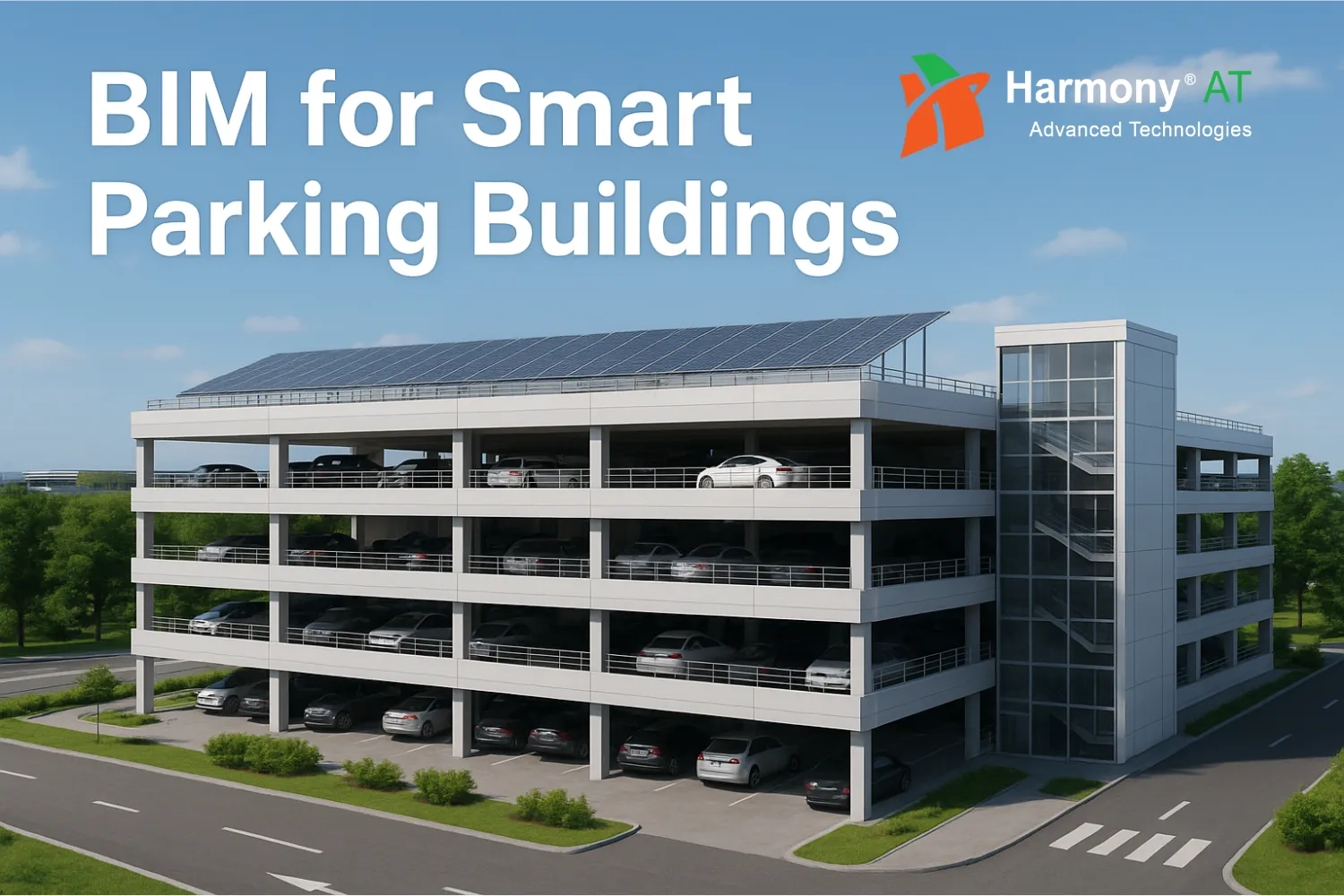In today's digital-first world, data centers have become the backbone of global connectivity, cloud computing, and enterprise operations. As demand for high-performance, energy-efficient, and rapidly deployable data centers grows, so does the complexity of their design and construction. Traditional methods often fall short in addressing the need for precision, speed, and coordination. This is where Building Information Modeling (BIM) steps in—transforming how data centers are planned, built, and managed. BIM offers an intelligent, collaborative process that ensures smarter design decisions, faster project delivery, and more reliable facility performance throughout the entire lifecycle of a data center.
Why Data Centers Require a Smarter Approach
Designing and building a modern data center is no small feat. Unlike typical commercial buildings, data centers demand an extraordinary level of precision and coordination to support mission‑critical operations. Below are some of the key challenges that make a smarter, BIM‑driven workflow essential
High-Density MEP (Mechanical, Electrical, and Plumbing) Systems
Data centers house an enormous concentration of IT equipment, leading to incredibly dense MEP infrastructure. This includes massive power distribution units, extensive cooling systems (CRAC/CRAH units, chillers, cooling towers), and intricate fire suppression networks. The sheer volume and interdependence of these systems require meticulous planning to optimize space, minimize energy loss, and ensure proper airflow and heat dissipation.
Stringent Cooling, Power, and Uptime Requirements
The continuous operation of servers generates significant heat, making effective cooling paramount. Data centers demand precise temperature and humidity control to prevent equipment failure. Similarly, an uninterrupted and clean power supply is non-negotiable. Even momentary power fluctuations can lead to data loss or system crashes. This necessitates robust UPS (Uninterruptible Power Supply) systems, generators, and redundant power distribution paths. Achieving "five nines" (99.999%) or even "six nines" uptime requires highly resilient designs that incorporate redundancy at every critical point, from power feeds to cooling units. This stringent requirement drives up complexity and cost, demanding innovative solutions for energy efficiency and reliability.
Coordination Among Multiple Disciplines and Contractors
The construction of a data center involves a wide array of specialized disciplines: electrical engineers, mechanical engineers, structural engineers, IT architects, security specialists, and civil engineers, to name a few. Each discipline contributes to highly interdependent systems. Furthermore, numerous contractors are often involved, each responsible for specific components like switchgear, chillers, raised flooring, or fire suppression. Effective coordination among these diverse teams is critical to avoid clashes, ensure seamless integration of systems, and maintain project timelines. Without a comprehensive and collaborative approach, miscommunications can lead to costly delays, rework, and even operational issues post-construction.
Need for Scalability and Futureproofing
Technology evolves rapidly, and data center needs can change dramatically over time. Designing a data center that can accommodate future growth in IT load, power requirements, and cooling demands is essential to avoid premature obsolescence and expensive retrofits. This involves implementing modular designs that allow for easy expansion of power and cooling infrastructure, flexible cabling pathways, and adaptable rack layouts. Future-proofing also extends to considering emerging technologies like liquid cooling or higher voltage distribution. Balancing the initial investment with the need for long-term flexibility and adaptability is a significant design challenge.
Read more: A Comprehensive Guide to Skyscraper Design
How BIM Solves Challenges in Designing and Constructing Data Centers
Enhanced Spatial Coordination and Clash Detection for High-Density MEP
BIM revolutionizes the management of high-density MEP systems by creating a comprehensive 3D model of the entire facility. This digital representation allows designers to precisely place and route all mechanical, electrical, and plumbing components, including large chillers, intricate ductwork, extensive cable trays, and complex piping. Crucially, BIM software offers advanced clash detection capabilities, automatically identifying conflicts between different systems (e.g., a pipe running through a structural beam or a duct obstructing a light fixture) before construction begins. This proactive identification of clashes significantly reduces costly rework, delays, and on-site errors, ensuring that the tightly packed MEP infrastructure can be installed efficiently and correctly, even in the most constrained spaces.
Performance Simulation for Stringent Cooling, Power, and Uptime
Meeting the stringent cooling, power, and uptime requirements of data centers is greatly facilitated by BIM's analytical capabilities. BIM models can be integrated with various simulation tools to perform detailed energy analysis, thermal modeling, and airflow simulations. Engineers can virtually test different cooling strategies, optimize airflow patterns within the white space, and predict power consumption under various load conditions. This allows for the precise sizing and placement of cooling units, UPS systems, and generators, ensuring optimal performance and energy efficiency. By simulating operational scenarios, BIM helps validate the design's resilience and redundancy, minimizing the risk of downtime and ensuring the facility can meet its critical uptime SLAs from day one.
Streamlined Collaboration and Communication Across Disciplines
One of the most significant advantages of BIM in data center projects is its ability to foster seamless coordination and communication among the multitude of disciplines and contractors involved. The BIM model serves as a central, single source of truth, providing all stakeholders with access to the most current design information. Architects, structural engineers, MEP specialists, and IT professionals can collaborate within the same model, making real-time updates and sharing insights. This shared platform minimizes misinterpretations, reduces the need for extensive RFI (Request for Information) processes, and ensures that all parties are working from a consistent set of data. Enhanced collaboration leads to more efficient decision-making, fewer errors, and a more integrated project delivery.
Facilitating Scalability and Future-Proofing Through Lifecycle Management
BIM extends its benefits beyond the design and construction phases, playing a crucial role in enabling scalability and future-proofing for data centers. The detailed digital model can be used throughout the facility's lifecycle, from initial planning to operations and maintenance. For scalability, BIM allows for the easy integration of future expansion plans, visualizing how additional racks, power modules, or cooling units will fit into the existing infrastructure. Furthermore, the model can store comprehensive asset information, facilitating maintenance scheduling, inventory management, and capacity planning. This lifecycle management capability means that as technology evolves and demands change, the data center can be adapted and expanded more efficiently, reducing the total cost of ownership and extending the facility's operational lifespan.
Conclusion
As data centers become increasingly vital to our digital infrastructure, the need for precision, efficiency, and adaptability in their design and construction has never been greater. BIM brings immense value by offering a centralized, intelligent platform that streamlines coordination, reduces risks, enhances performance, and ensures long-term scalability. From accurate MEP modeling to performance simulations and lifecycle asset management, BIM empowers project teams to deliver smarter, faster, and more reliable data centers.
At Harmony AT, we harness the full potential of BIM to help our clients plan, design, and manage high-performance data center facilities with confidence.
Ready to build a smarter data center? Let BIM lead the way — with BIM services for data center design from Harmony AT
Categories





